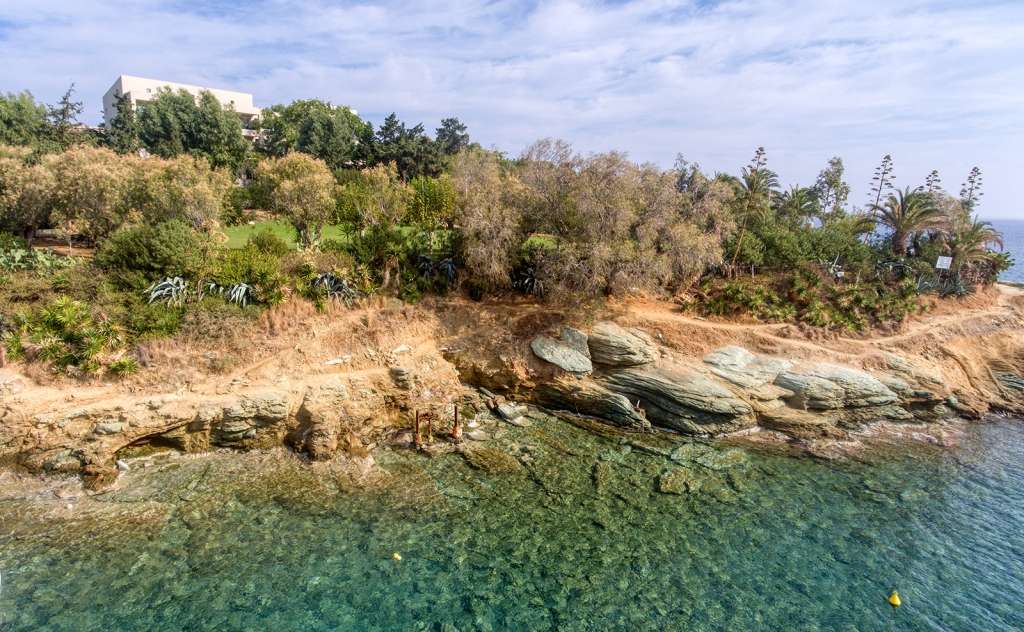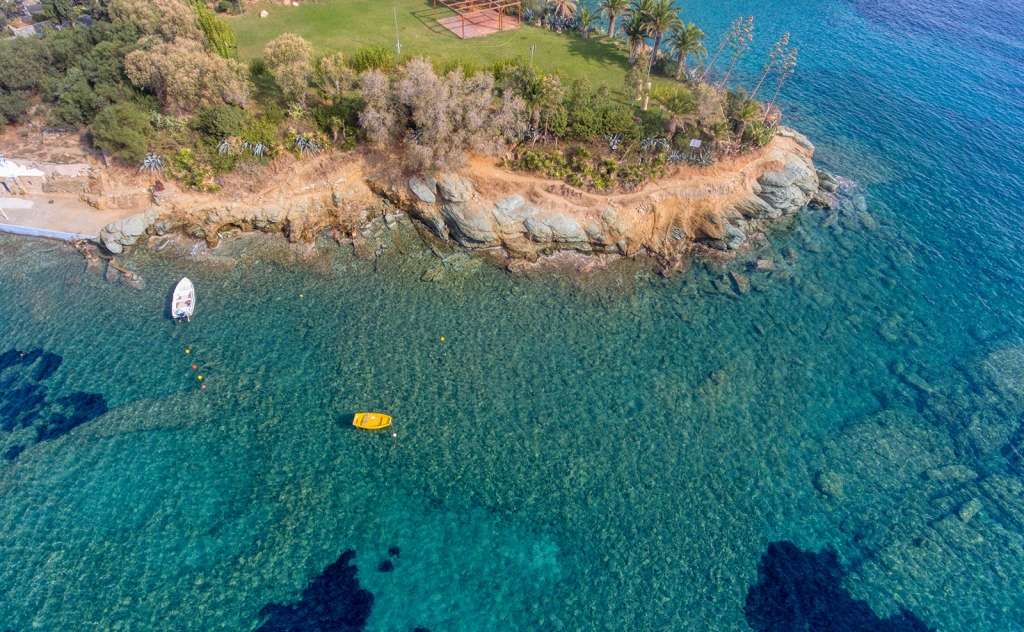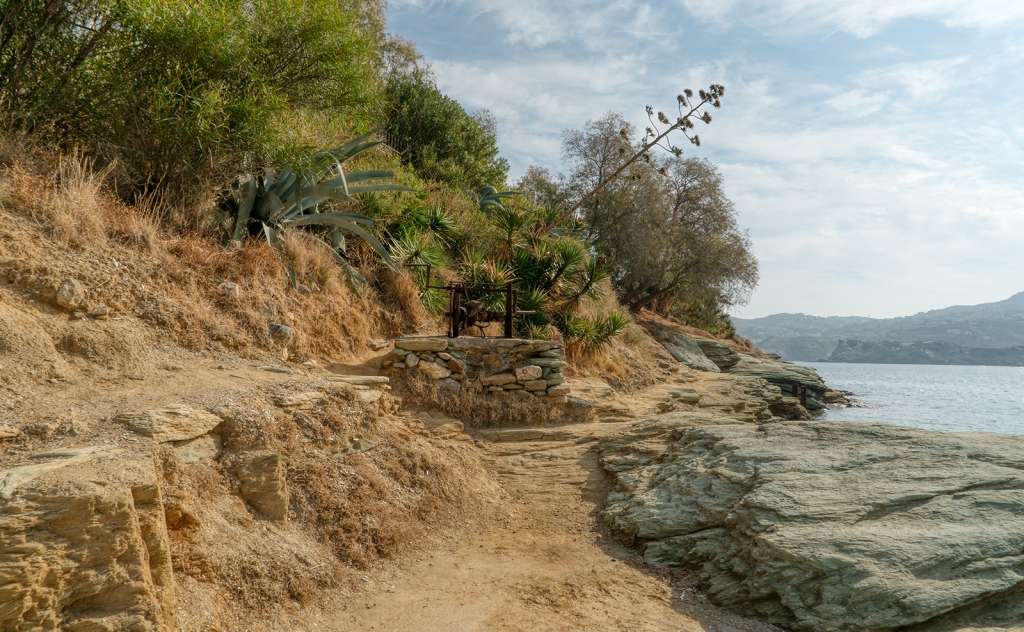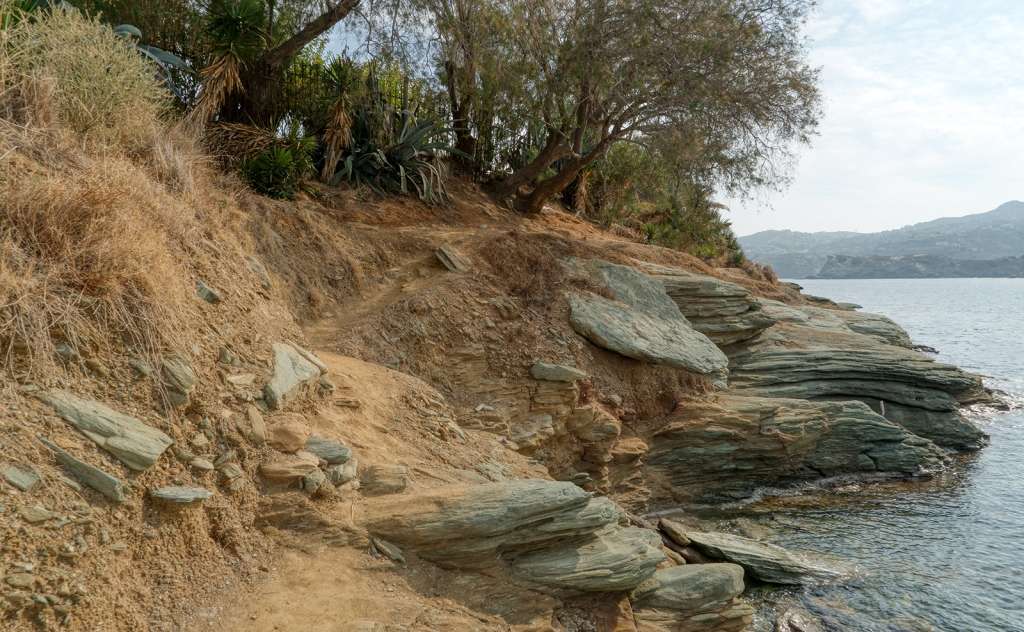Ancient Apollonia
Just a few metres northwest of the main beach of Agia Pelagia (near the Evresis temple), the visitor can see the remains of the ancient city of Apollonia, which the Kidonians destroyed in 171 BC. Ancient Apollonia is the most important archaeological site in the region today.
The first excavations began at Cape Souda by Italian archaeologist Antonio Taramelli, and excavations brought to light parts of the port's facilities and water reservoirs. The excavation work continued in the following years, with archaeologist Stylianos Alexiou in charge. Gradually, installations of public buildings and private residences were discovered, dating back to the Hellenistic period. These facilities highlight the city of Ancient Apollonia in the coastal area of Agia Pelagia.
One of the most important findings is the large building complex identified with the Rector's Office - Andreio. Specifically, it is a rectangular building measuring 15 x 6.30 metres. Its construction is meticulous, as evidenced by the carved limestone boulders, the plastered floors and the plastered interior walls decorated with red, white and yellow zones.
The Rector's Office was the centre of each city-state's administrative and political life. The most important authority in the city-state of Crete was the council of the "worlds", the annual, that is, representatives, lords of the genus. The meetings of the lords and the city representatives took place on its premises. Usually, the Rector's Office was responsible for executing Parliamentary decisions and awarding justice. The building also functioned as Andreio. That means that it was the place where meals were provided, which can be seen from the two four-sided hearths. The hearths were filled with layers of fine ash, while near one, the pit's neck and mouth were found inside the coated floor.
West of the Rector's Office - Andreio, a building was found, probably the cemetery of the ancient city. It is a building with relatively careful construction and an entrance on the north side. The two buildings are separated by an alley and a 16-step staircase of slate slabs, which, perhaps, led to the cemetery's entrance.
Other traces of the ancient city have been found, while parts of it are submerged in the bay. In fact, the visitor can see the remains of house walls, as well as abundant shells. Finally, many of the findings of the excavations are kept today in the Archaeological Museum of Heraklion.






